In the last four weeks we examined two general categories of Xantolo masks that were described by Jaled Muyaes and Estela Ogazón in their 1981 book, Máscaras—those that are finely carved and with realistic features versus others that seem primitive and/or geometric. Although I have relabeled the geometric masks as the Xipe Totec style, there are others that do seem more appropriately described as “primitive,” idiosyncratic, or borrowed from another dance; these will be the subject of discussion in this next series of posts. Here is one that is especially strange and idiosyncratic, so striking and alien! I see it as a masterpiece of folk art that can stand against almost anything from any culture.
I bought this mask from Jaled Muyaes and Estela Ogazón in 1997. It was found in Hidalgo. Evidently it is intended to be grotesque.
This mask is 7 inches tall, 6½ inches wide, and 4 inches in depth.
There is a pronounced snout and prominent teeth. One would call this a dog or a bear, were it not for the human nose and the decorated headband.
The staining from use on the back of the rim is extreme.
The next Xantolo mask is more realistic in its design. I got this mask from Robin and Barbara Cleaver in 1994. It was collected in the field by Jaled Muyaes and Estela Ogazón. We only know that it is from Hidalgo (but see photo that follows).
Instead of a mouth within a mouth we are presented with a highly stylized mouth, a mouth in the shape of a beak. Above the bridge of the nose there are carved lines to indicate a frown. One could wonder whether this is a mask of suffering, as if to provide an image of the death experience. Isn’t this a sad face?
It is possible that this mask is a borrowed Moor from the Moros y Cristianos dance. If so, then it seems highly effective in its new role. It is 9 inches tall, 6 inches wide, and 3 inches in depth.
On the back of the forehead are two words—CHANTOLO and HGO (Hidalgo). The staining from use is obvious.
Here is a link to a dance photo taken in Coamitla (Municipio of Calnali), Hidalgo that includes a mask like this one in the foreground, along with others like the one that follows.
http://cultura.hidalgo.gob.mx/imagenes/Danzas/danzas-huehues.jpg
In the Mexican states of Hidalgo and Veracruz, such Xantolo masks have a variety of names, depending on local traditions. The dancers who wear these masks can be called Viejos, or also Huehues, both terms referring to “old ones.” The Huehue label introduces potential confusion for several reasons. To begin with, masks sometimes seem to have been labeled as Huehues at the time of collection in the field, not because this was their identified use but more as a generic label, when these masks were really Moros or masks for Carnaval. Furthermore, Huehue dancers in neighboring states perform at Carnaval or in other dances, rather than during Todos Santos. I have attempted to sort these masks into their most likely categories, but there remains uncertainty.
Here is a primitive Xantolo mask from San Pedro Coyutla, Municipio of Chalma, Veracruz. Although I got this from Robin and Barbara Cleaver in 1994, it was previously in the collection of Jaled Muyaes and Estela Ogazón.
Although of simple design, this mask was carefully made, with the brows and the rims of the eyes carved in relief.
The two holes on the left side of the mask flank a crack in the wood. At one time there must have been a string tied through these holes to bind the broken parts together, perhaps while the glue was setting. This mask is 9 inches tall, 6 inches wide, and 3 inches in depth.
This mask was heavily used.
I got this next mask from Jaled Muyaes and Estela Ogazón in 1997. Jaled told me that this is a Xantolo mask with the face of the sun and that such masks were rare! It is also a face within a face, like the Xipe masks.
The mouth is very simply carved, in contrast to the relief carving of the rays of the sun.
This mask is 8 inches tall, 6½ inches wide, and 3¼ inches in depth.
This mask is dirty and stained from use.
This next mask is mainly distinguished by scarification. Perhaps this is a simplified version of the Xipe masks. It is from El Rosario, Hidalgo. I got it from René Bustamante, but it was originally collected in the field by Jaled Muyues and Estella Ogazón.
This is one of those Xantolo masks that is so shapeless that it could represent the face of human skin that was worn by an Aztec priest to impersonate Xipe Totec.
This mask is 9¼ inches tall, 5¾ inches wide, and 3½ inches in depth.
There is obvious wear.
I bought this next mask from the Mano Magica Gallery in the city of Oaxaca, in 1999. It had previously been in the collection of Jaled Muyaes and Estela Ogazón. When I showed it to Jaled, he described it as having a “canned ham face,” referring to the practice of scoring the surface of a ham before cooking. The technicolor scars add to the allure.
This mask has an amusing appearance, although such extreme scarring should be horrifying.
This mask is 7 inches tall, 5 inches wide, and 2¾ inches in depth.
The tag on the back says Chantolo, Hidalgo.
I used to work as a child psychiatrist. In that role I made it a point to wear Save The Children™ neckties that were printed with images from childrens’ drawings. Save the Children is a foundation that aids under-served children, all over the world. I was so surprised to find the next mask, because it had one of the images from these ties, but carved in relief. Here is the mask, followed by a tie that could have served as the model for the mask. I got it from Jaled Muyaes and Estela Ogazón in 1999. It is from Jaltocan, Hidalgo.
I imagine that Save The Children provided services in this area and that this mask commemorates their presence. Of course it may commemorate a lost child.
This mask is 8½ inches tall, 5 inches wide, and 2¾ inches in depth.
This mask appears to have had heavy use.
Here is one of my Save The Children neckties.
Note how closely the posture and clothing on the mask resemble these details on the necktie.
Next week I will continue to discuss atypical Xantolo masks.

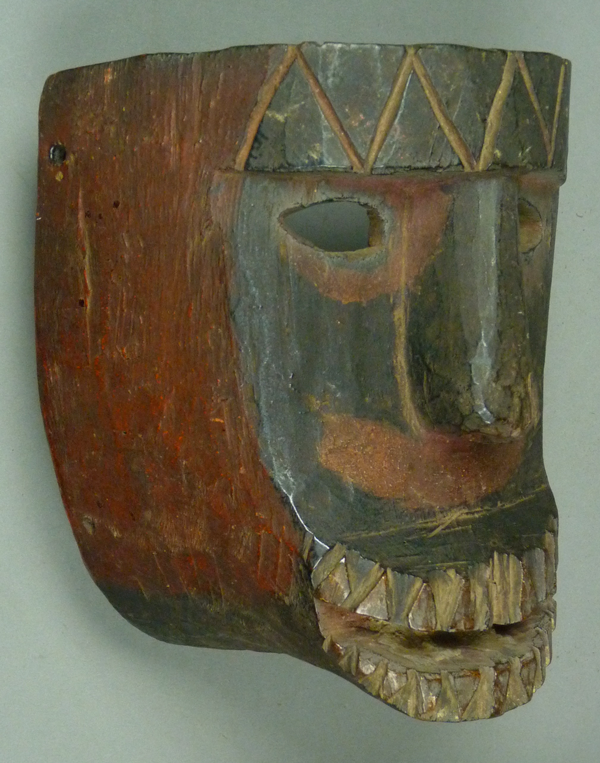
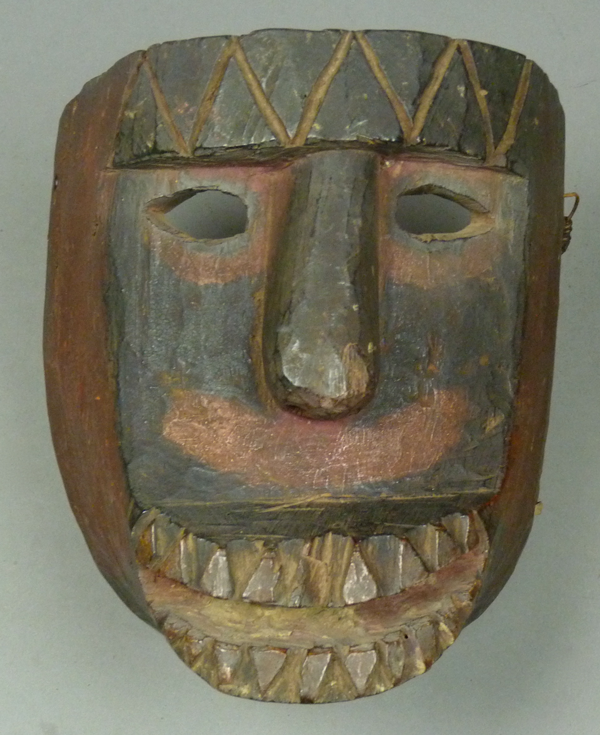


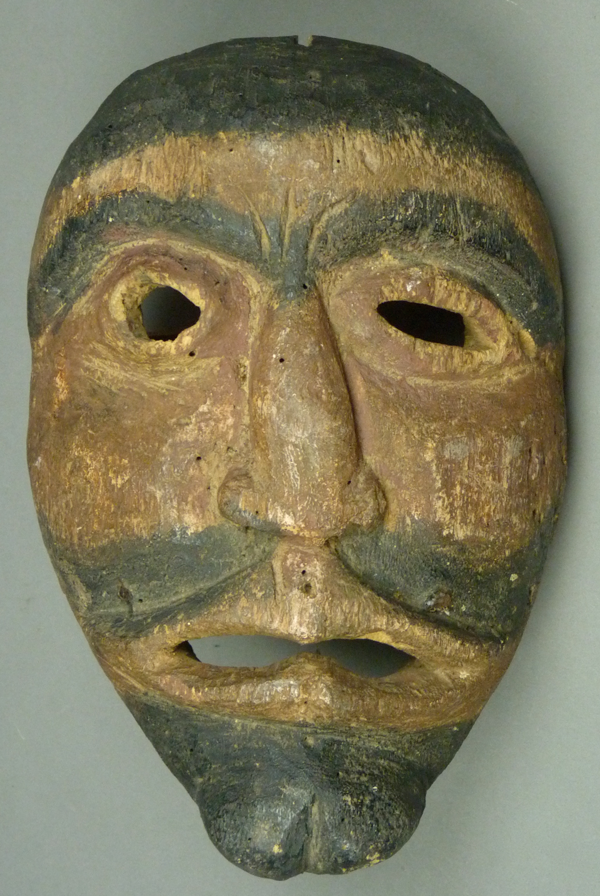
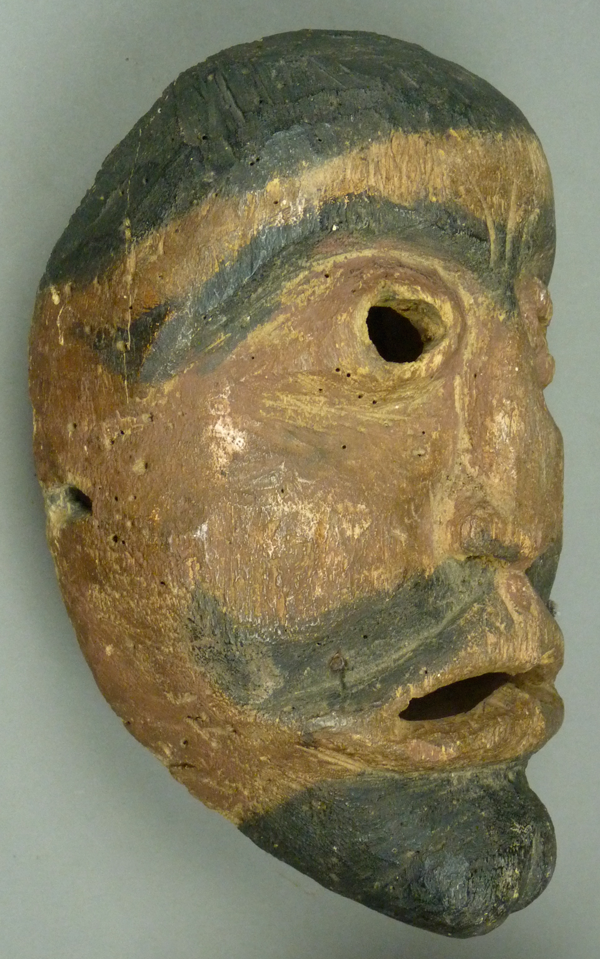
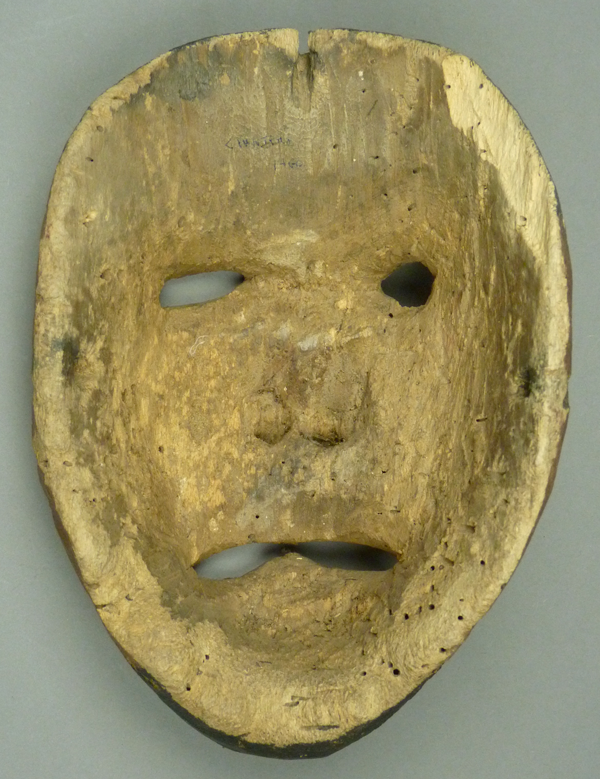

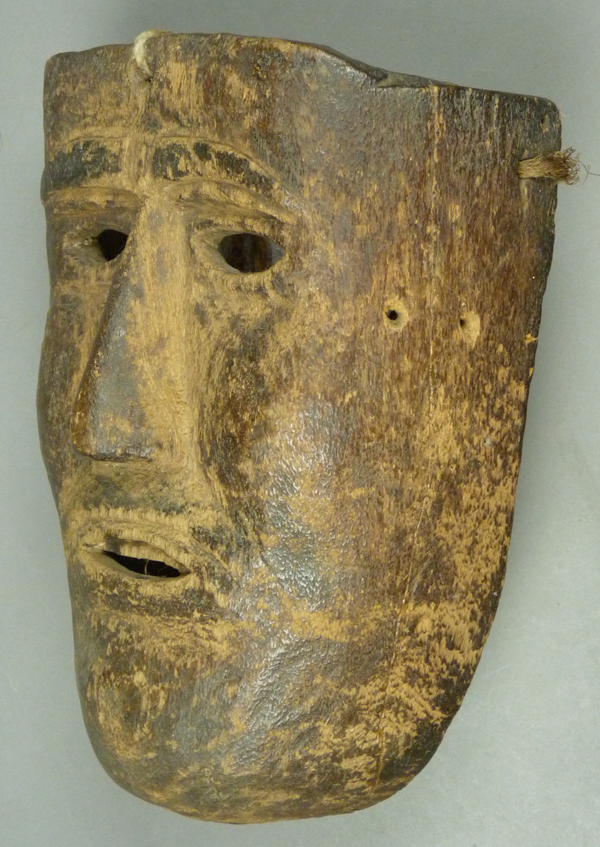
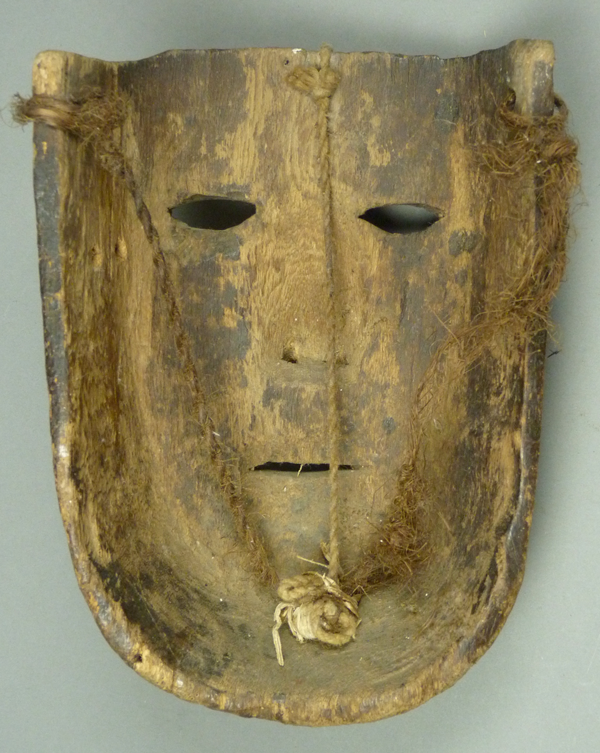

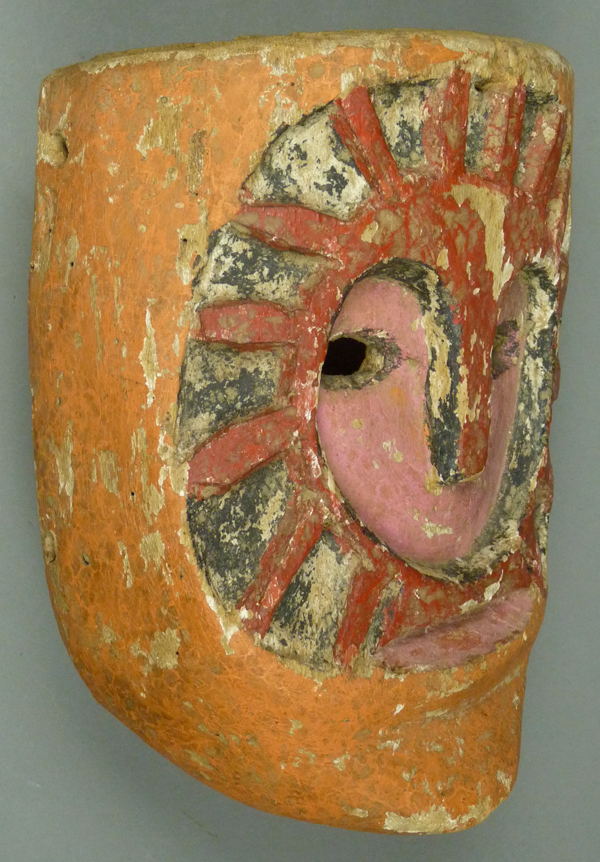
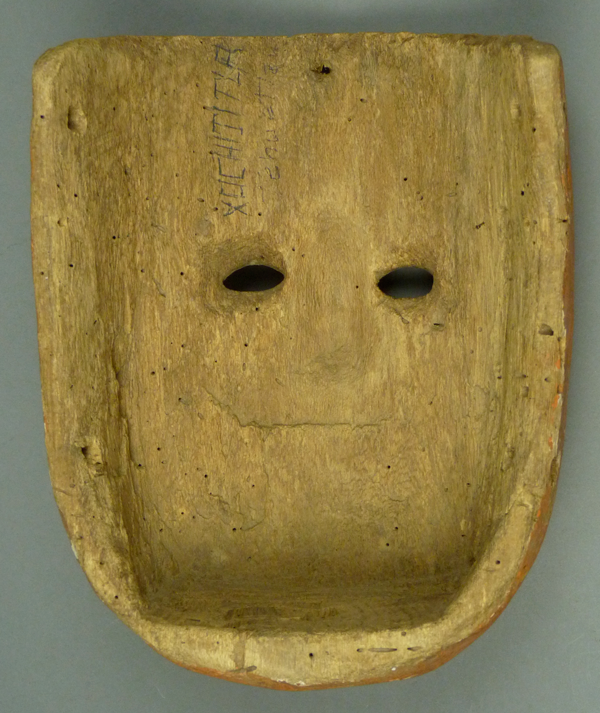
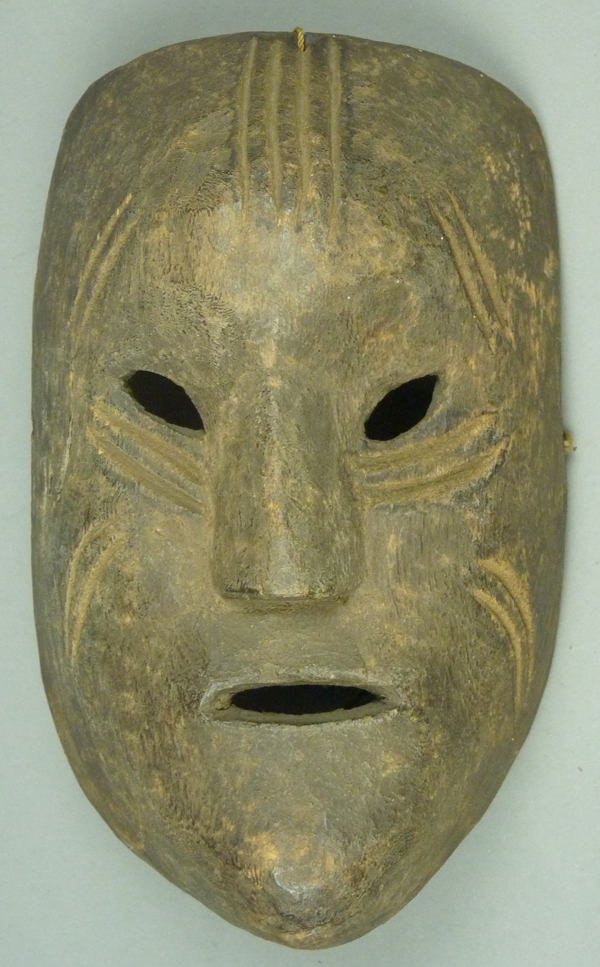

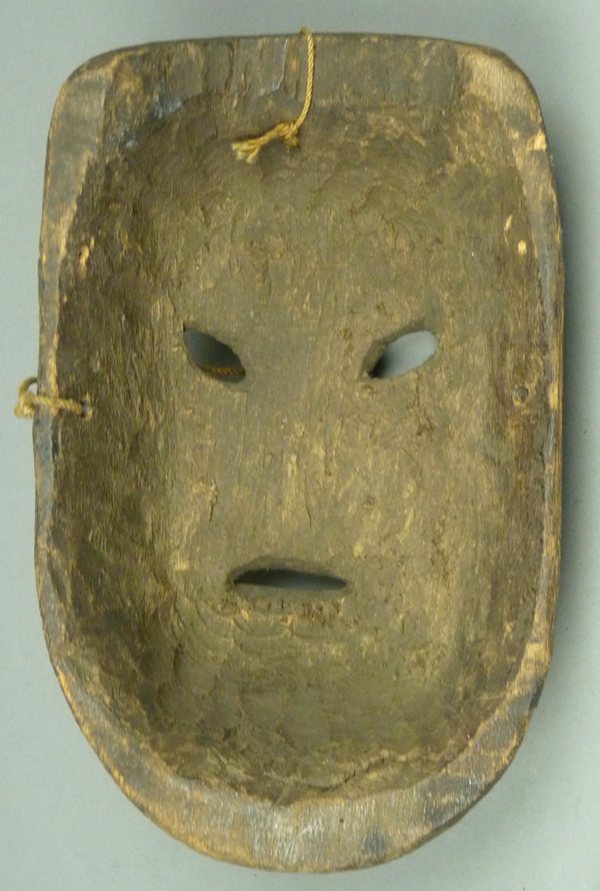
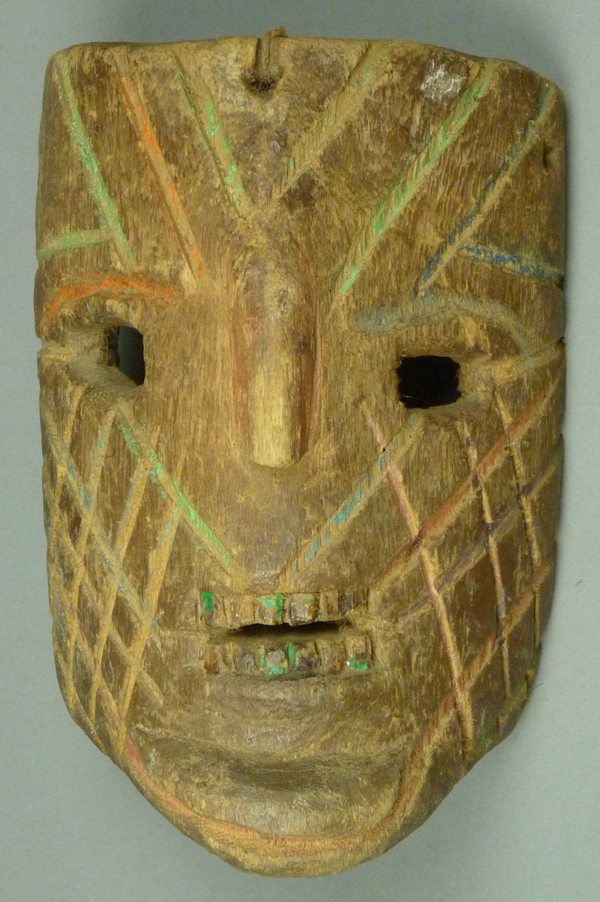
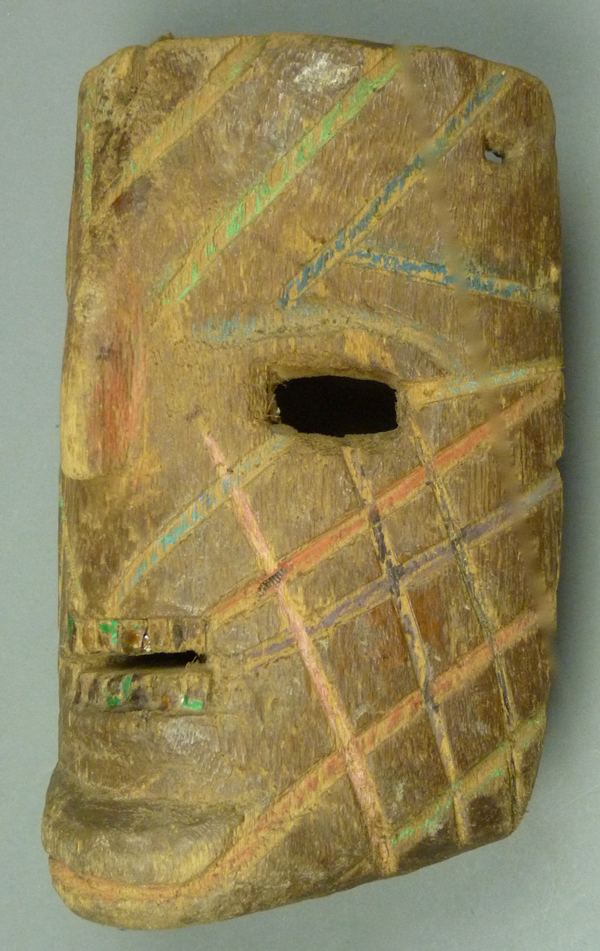
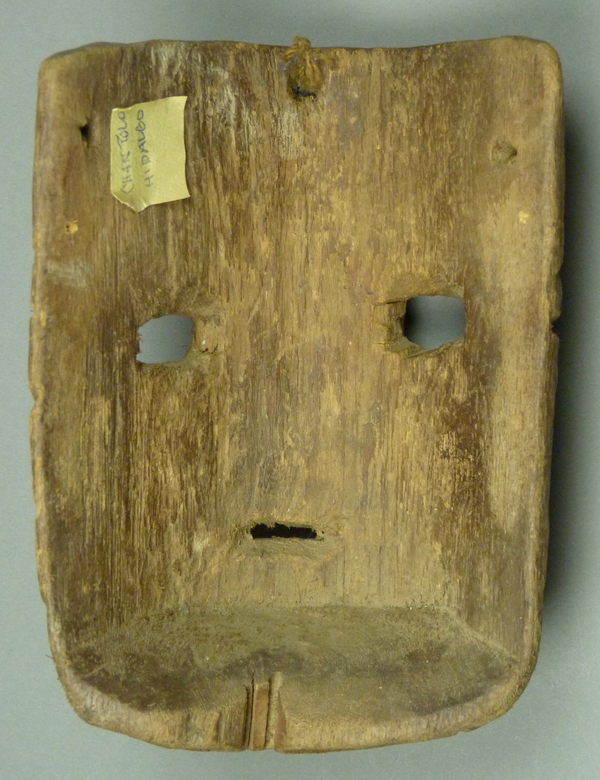


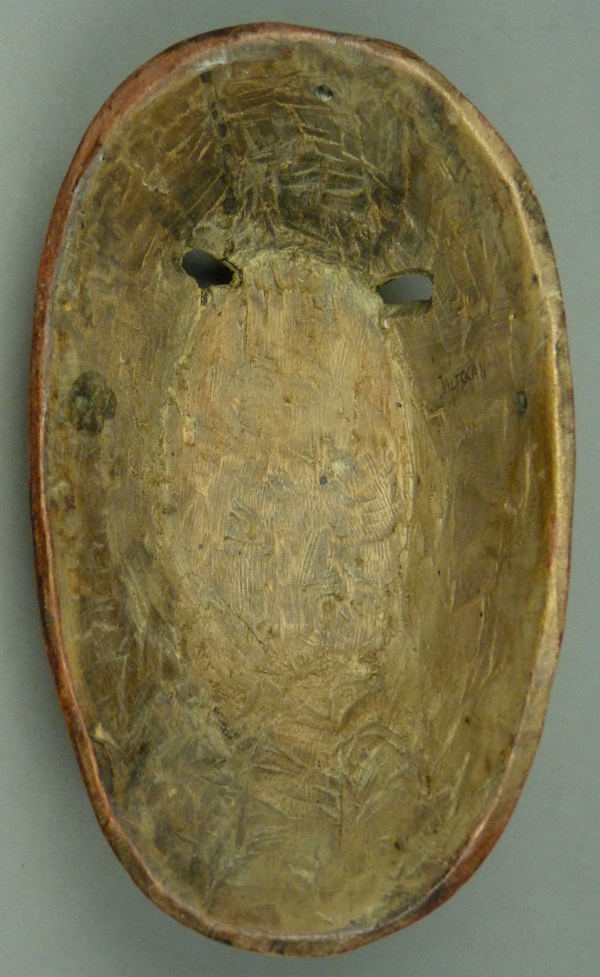
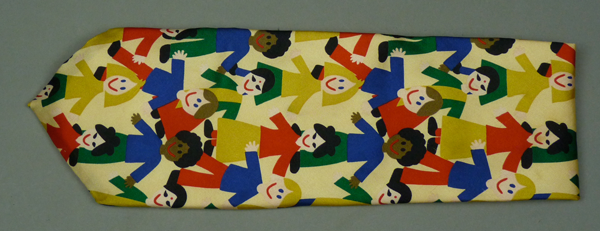
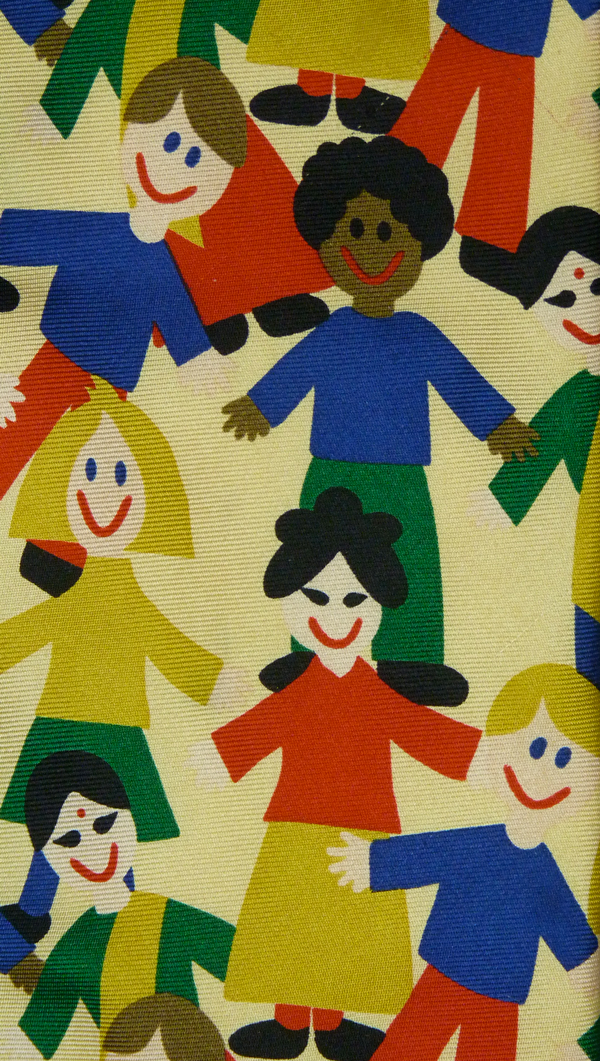
Love the tie mask. So unique!
John
I always wonder whether it memorializes a dead child.
Bryan